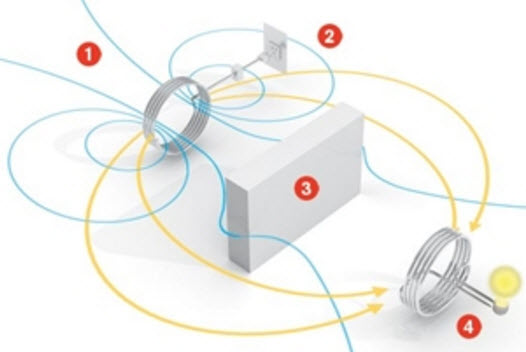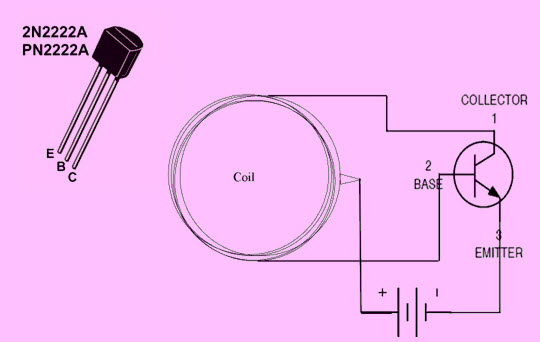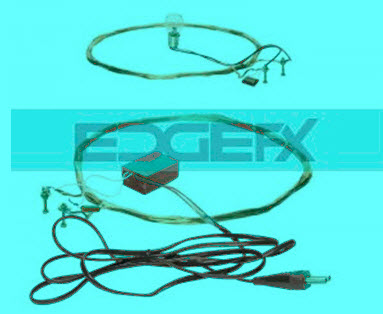In present day’s, electricity is treated
as one of the basic requirements to human beings. But, the cost of
making electricity is risky to the environment. According to the energy
information records approximate 50% of all electricity plants are
contaminating coal plants. Various changes in the environment have
happened over the last thirty years, which are injurious to the
forthcoming of this planet. To overcome this, here is a solution to
diminish greenhouse gas emissions into the soil’s atmosphere through an
alternative power generation. One sustainable technology leading this
charge is WPT (wireless power transmission) or IPT (inductive power transfer).
WPT (Wireless Power Transmission) Technology
WPT technology is an old technology and
it was demonstrated by “Nikola Telsa” in the year 1980. Wireless power
transmission mainly uses three main systems such as microwaves, solar
cells and resonance. Microwaves are used in an electrical device
to transmit electromagnetic radiation from a source to a receiver.
Accurately the name WPT states that, the electrical power can be
transferred from a source to a device without using wires. Basically, it
includes two coils they are a transmitter coil & a receiver coil.
Where the transmitter coil is powered by AC current to create a magnetic
field, which in turn induces a voltage in the receiver coil.

The basics of wireless power
transmission include the inductive energy that can be transmitted from a
transmitter coil to a receiver coil through an oscillating magnetic
field. The DC current supplied by a power source is changed into high
frequency AC current by particularly designed electronics built into the
transmitter.
In the TX (transmitter) section, the AC
current increases a copper wire, that creates a magnetic field. Once an
RX (Receiver) coil is located near to the magnetic field, then the
magnetic field can induce an AC current in the receiving coil. Electrons
in the receiving device, converts the AC current back into DC current,
that becomes working power.
Wireless Power Transfer Circuit
The simple wireless power transmission circuit is shown below. The required components
of this circuit mainly include 20-30 magnet wire (gauge copper wire), A
battery-1, transistor (2N2222) and LED.The construction of this circuit
comprises of a transmitter and a receiver.

Transmitter
Take a PVC pipe and whirl a wire on it
seven times after whirling a wire about three inches make a loop for
center terminal and continue the process. Now take transistor 2N2222 and
connect its base terminal to one end of the copper coil, the collector
terminal to the other end of the copper coil and now connect the emitter
terminal to the negative (–ve) terminal of AA battery. The center
terminal of the copper coil will be connected with the positive (+ve)
terminal of an AA battery. When then the receiver coil is placed 1 inch
above of the transmitter coil, then the LED will blink.
Receiver
Make a 15 turn copper coil and connect a light emitting diode to its ends.
Wireless Power Transfer Circuit Working
The wireless power transmission can be
defined as, the energy can be transmitted from the transmitter to a
receiver through an oscillating magnetic field.
To accomplish this, power source (DC
current) is changed into high frequency AC (Alternating Current) by
particularly designed electronics erected into the transmitter. The AC
boosts a copper wire coil in the transmitter, which produces a magnetic
field. When the receiver coil is placed in proximity of the magnetic
field, the magnetic field can make an AC (alternating current) in the
receiving coil. Electronics in the receiving coil then alters the AC
back into DC which becomes operating power.
Application of Wireless Power Transfer
The main intention of this project is to
design a WPT system in 3D space (transfer power within a small range)
and the block diagram of this project is shown below.The block diagram
of the wireless power transfer mainly builds with HF transformer, capacitors, diode, rectifier, inductor coil filled with air and lamp.
The person is mandatory to be worked every year to change the battery.
This project is designed to charge a rechargeable battery wirelessly.
Since charging of the battery is not possible to be demonstrated, we are
providing a DC fan that runs through wireless power.

Thus the power transfer can be done with
the transmitter (primary) to the receiver (secondary) that is separated
by a considerable distance (say 3cm). Therefore the power transfer
could be seen as the TX transmits and the RX receives the power to run a
load.
Moreover, WPT technique can be used to
charge the gadgets like mobile phone, laptop battery, iPod, propeller
clock, etc. And also this sort of charging offers a far lower risk of
electrical shock. Furthermore, this project can be enhanced by
increasing the distance of power transfer as the research across the
world is still going on
Thus, this is all about wireless power
transmission, wireless power transfer circuit working and its
applications which include simple electronic devices like mobile phones,
mobile chargers, etc.. Wireless power transfer not only reduces the
risk of shock and stops to plug frequently into the sockets. We hope
that you have got some basic insights about this concept. Moreover, for
any technical help on this topic as well on other electrical and electronic engineering projects you can contact us by commenting below.

No comments:
Post a Comment